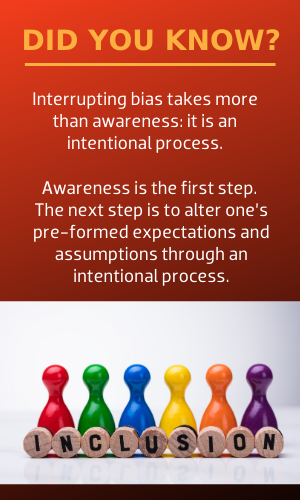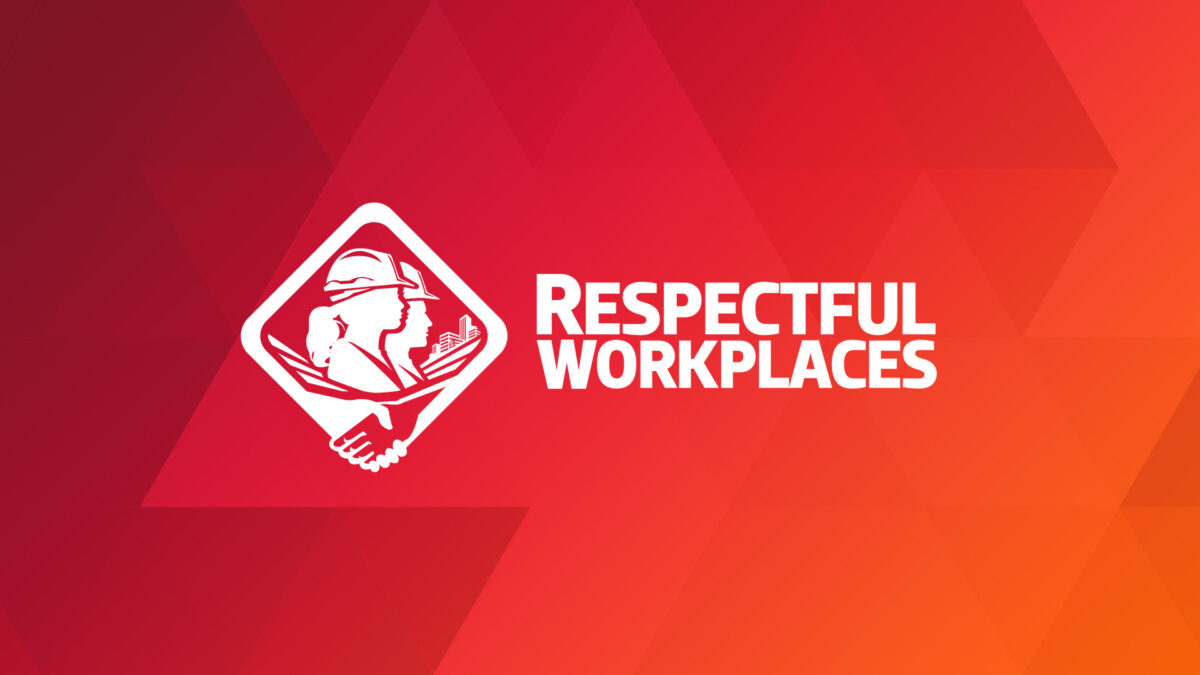Does your organization have a leadership team that makes inclusion a personal priority?

In order to maintain the momentum to address systemic racism, an organization must have a “leader-led” (see Blog #47) inclusion initiative. This means that the leadership team, including managers, makes inclusion a personal priority.
According to research (see Blog #48), because of unconscious or unintentional bias, leaders and managers can behave in ways that limit the potential of talented individuals. Because of their ability to influence the performance and success of those subordinate to them, leaders and managers can have an impact on the ability of an organization to be inclusive of Black, Indigenous, and People of Colour.
However, leaders and managers can take steps to interrupt their bias through conscious management. Awareness is only the first step. The next step is to alter their pre-formed expectations and assumptions through an intentional process.
Here are five tangible ways that leaders and managers can interrupt their bias:
1. Accept the fact that everyone has biases.
Even when we intend to be inclusive, often our unconscious bias can influence our behaviour, both at the interpersonal level in our interactions and the systems level in the processes that we develop. The only way to separate bias from behaviour is to make unconscious bias, conscious.
2. Change our pre-formed expectations and assumptions.
Unfortunately, our biases are full of stereotypes. Even when we don’t believe these stereotypes consciously, they are continually reinforced in our unconscious mind. The most effective way to change the information in our unconscious mind is to consciously replace it with new information. We need to have a substantial number of experiences that counter those pre-formed assumptions. This requires new experiences on a regular basis with people who are different from us.
3. Remember that the unconscious mind works more quickly than the conscious mind.
When involved in decision-making about recruitment and advancement, consciously consider what bias you may have (negative or positive) about the candidate and plan to minimize its impact.
4. Find ways to learn about the daily work experiences of Black, Indigenous, and People of Colour at your organization.
Without this knowledge, you won’t have the full picture of the bias that is affecting their careers. Often, leaders and managers believe their organizations are more inclusive than they may actually be. For example, the Boston Consulting Group found that those in leadership positions tend to underestimate by 10 to 15 percentage points the bias in recruiting, retention, and advancement reported by members of underrepresented groups.
5. Examine and redesign important recruitment and advancement policies and processes to minimize the potential impact of biases.
In a study to determine whether employers were discriminating against job applicants with “African-American-sounding” names, the researchers found that applicants with “White-sounding” names were 50% more likely to get an interview than applicants with “African-American-sounding” names. They also found that lower-skilled White applicants received more interviews than higher-skilled African-American applicants.
Maintaining the momentum to address systemic racism over the long term will require visible and active leadership commitment. Because of the power of unconscious or unintentional bias to influence the careers and performance of those subordinate to them, leaders and managers have an important role to play by making inclusion a personal priority.
The BuildForce Respectful Workplace Online Toolkit provides three tools based on the proven practices of respectful and inclusive organizations to help address systemic racism: the Online Self-Assessment Tool, a Policy Framework and Implementation Guide, and the online course, “Working in a Respectful and Inclusive Workplace.”
The management Self-Assessment Tool provides a blueprint of the actions required to identify and re-work systems where unconscious bias may be impacting management goals to be fair and inclusive in their recruitment, promotion, and retention practices.
Also look for the new BuildForce online course, to be released in early 2021, to help leaders and managers to understand systemic racism. BuildForce is also developing a new module for the “Working in a Respectful and Inclusive Workplace” course to help workers develop awareness about systemic racism, also to be released in 2021.
For more info:
- Bertrand, Marianne and Sendhil Mullainathan. “Are Emily and Greg More Employable Than Lakisha and Jamal?” The American Economic Review. September 2004. See https://cos.gatech.edu/facultyres/Diversity_Studies/Bertrand_LakishaJamal.pdf.
- Boston Consulting Group. “Fixing the Flawed Approach to Diversity.” January 2019. See www.bcg.com/en-ca/publications/2019/fixing-the-flawed-approach-to-diversity.aspx.
- Deloitte. “The Diversity and Inclusion Revolution: Eight Powerful Truths.” January 2018. See www2.deloitte.com/us/en/insights/deloitte-review/issue-22/diversity-and-inclusion-at-work-eight-powerful-truths.html.
- Donovan, Mason and Mark Kaplan. “The Inclusion Dividend, 2nd Ed.” DG Press, New Hampshire, U.S., 2019.
Read from the beginning. Click here to start at Part 1.
What can an effective Respectful and Inclusive Workplace Program deliver?
- Become an employer of choice – attract, retain, and advance top talent from all sources of labour
- Unlock collaboration and innovation – create high-performing teams through diversity of thought and experience
- Build your brand – your organization will gain a competitive edge as a leader and innovator
Get started today!
The BuildForce Canada Online Respectful and Inclusive Workplace Toolkit includes:
- the Respectful Workplace Online Self-Assessment Tool to assist organization leadership in assessing their current situation and identifying where they may need to make changes
- the Respectful Workplace Policy Framework and Implementation Guide to assist organizations in creating and implementing a policy that supports a respectful and inclusive workplace
- the Respectful Workplace Online Training Course to train workers on how to create and support a respectful and inclusive workplace
- the online course Introduction to Understanding Systemic Racism: A Guide for Leaders and Managers
All the resources you need to create and support a respectful and inclusive workplace!

Respectful and Inclusive Workplaces
